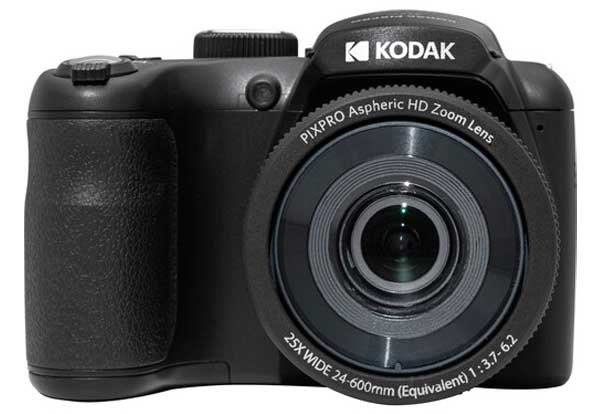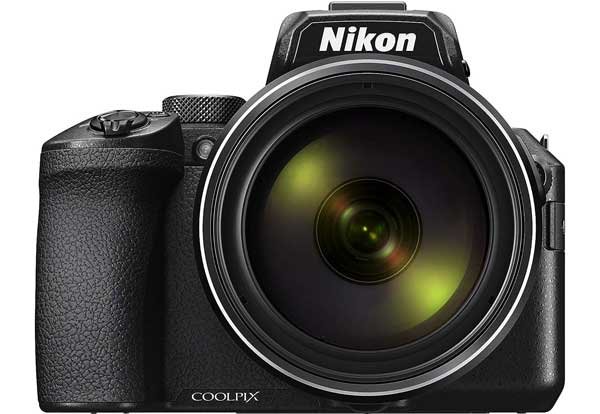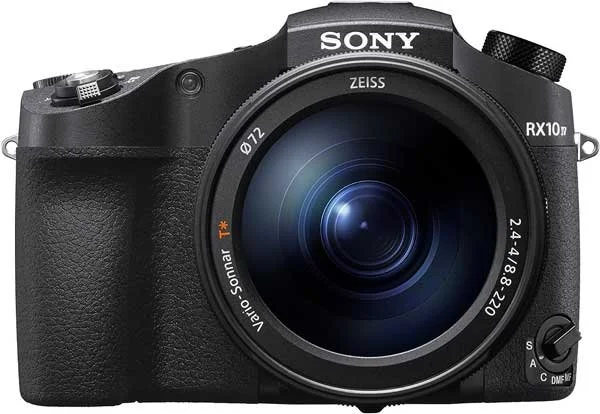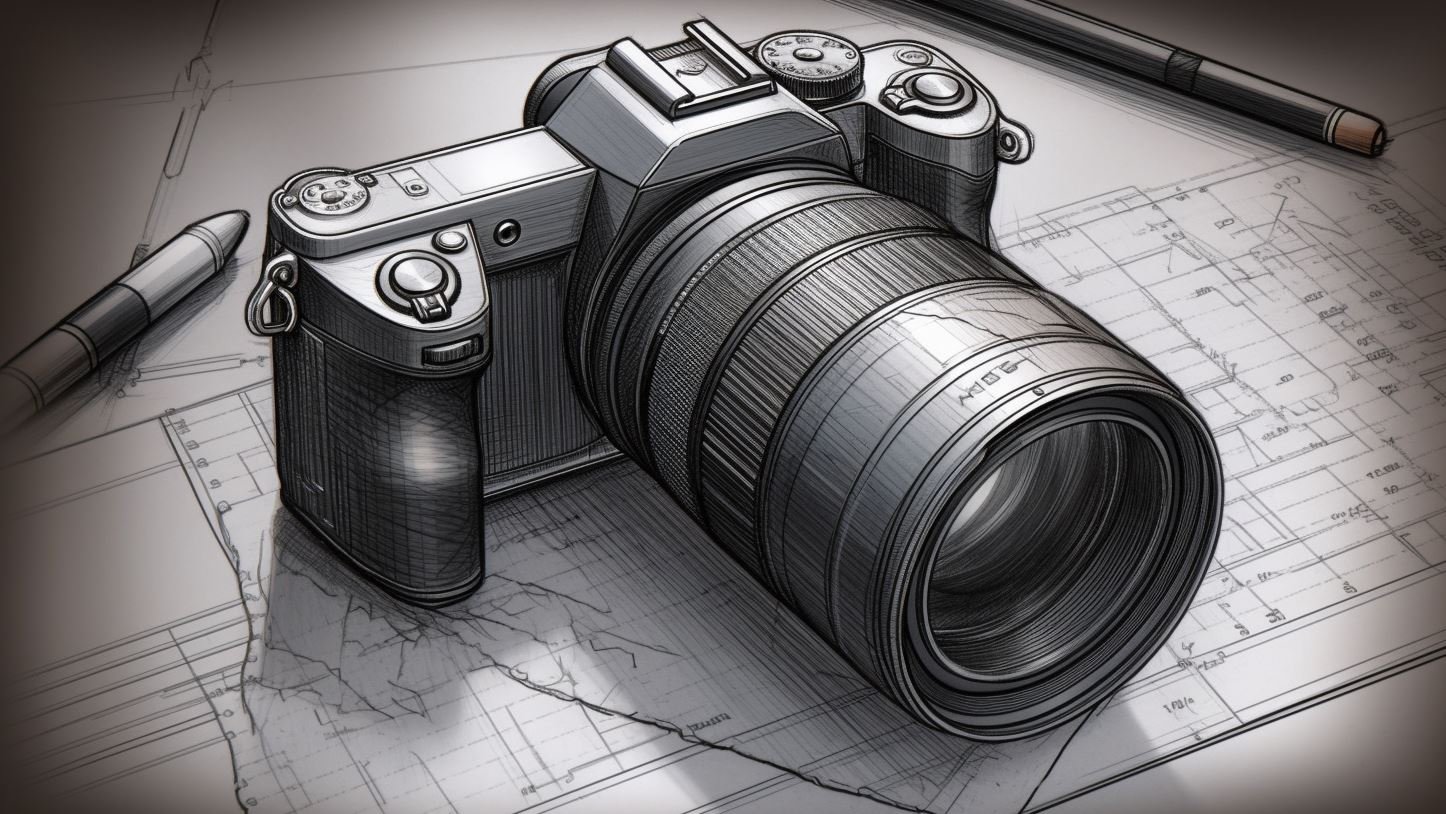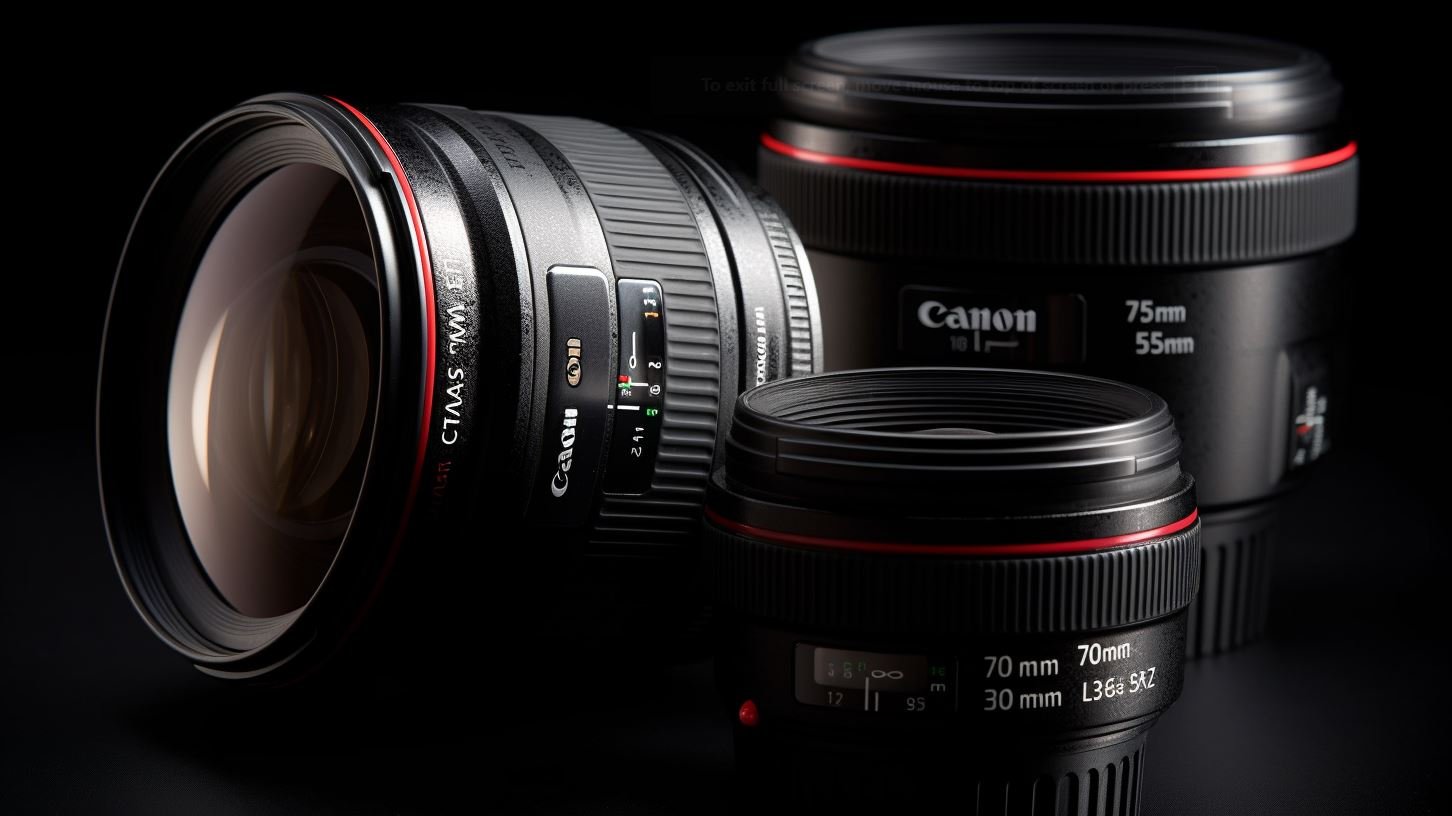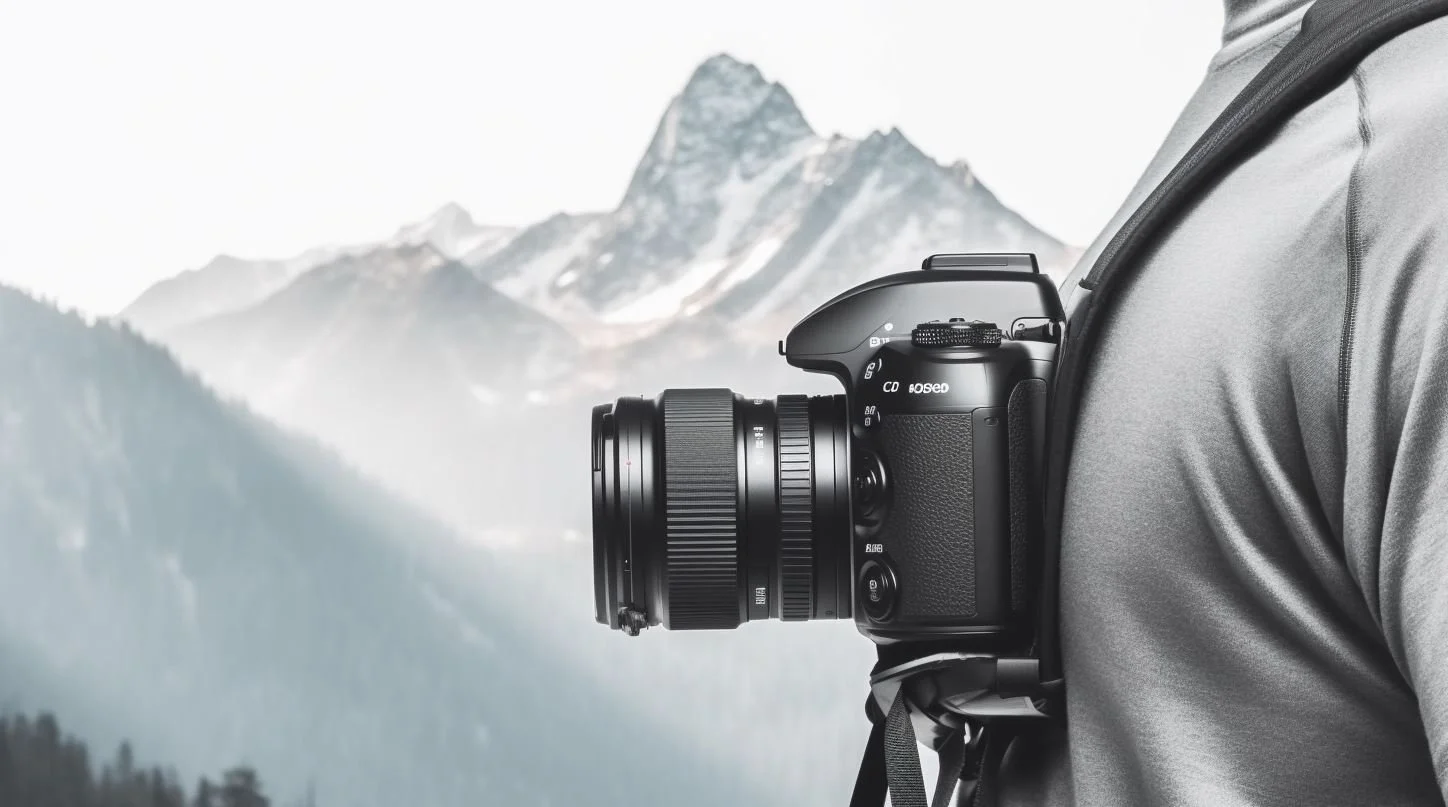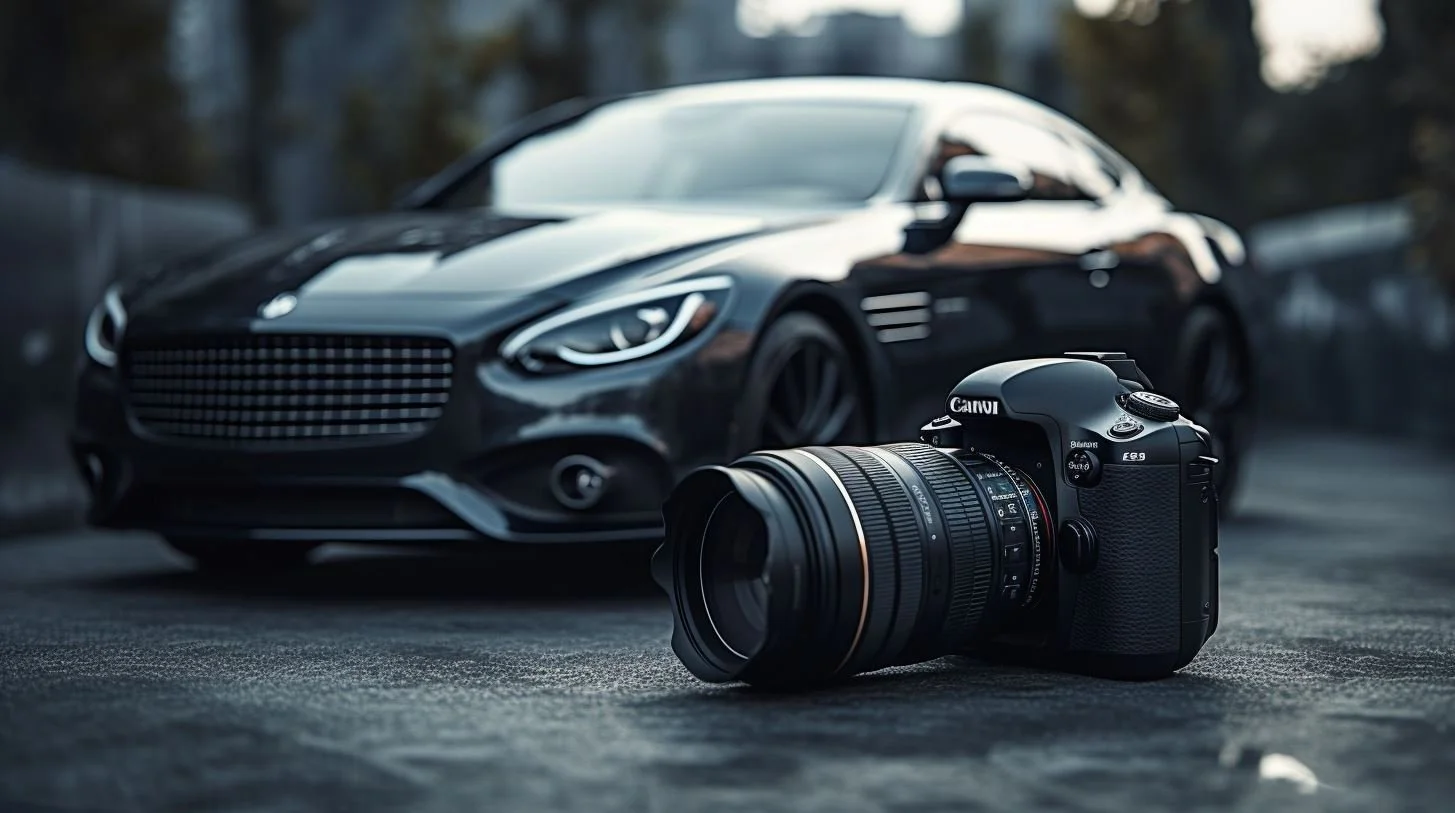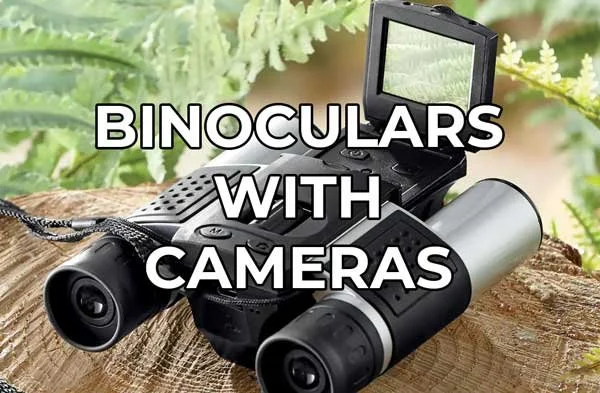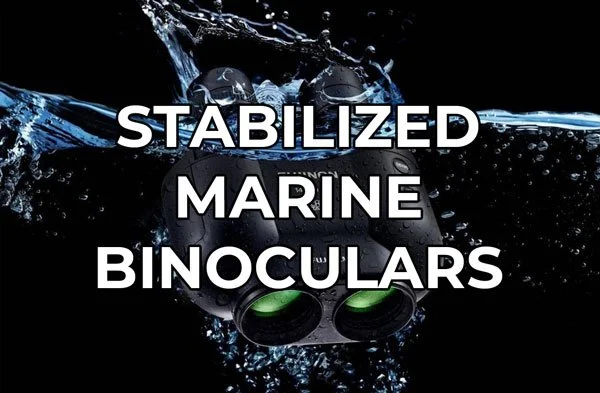Best Affordable Camera for Wildlife Photography
Capturing the Wild without Emptying Your Wallet: The Ultimate Guide to Affordable Wildlife Cameras
The allure of wildlife photography is undeniable. There's a certain thrill in capturing the untamed, unscripted moments that nature offers.
But let's face it, the pursuit of the perfect shot can sometimes be as elusive as the wildlife itself, especially when the equipment doesn't match the ambition. The common myth? You need to spend a fortune to get a decent camera for wildlife photography. We're here to debunk that.
Welcome to our comprehensive blog post on the best affordable cameras for wildlife photography.
Delve into our buyer's guide, which meticulously breaks down essential features like durability, ISO performance, battery life, and more. Understand the nuances of what makes a camera truly worthy of the wild. Afterward, we'll segue into recommendations, presenting a curated list of cameras great for wildlife photography that won't break the bank.
Whether you're an aspiring wildlife photographer or a seasoned professional looking for a backup camera, this guide aims to equip you with the knowledge to make an informed choice.
So, let's embark on this journey together and find you a camera companion that complements your passion and prowess.
Read Before Buying:
When seeking the perfect affordable camera for wildlife shots, here are the key points to focus on:
Image Quality: Prioritize sharpness, detail, and color accuracy. A higher resolution is beneficial but also factor in the sensor and processing capabilities.
Speed and Autofocus: Opt for fast autofocus and high burst mode speeds to capture fleeting moments and rapid actions.
Lens Compatibility: Ensure a good range of compatible telephoto lenses for capturing distant subjects.
ISO Performance: A camera that excels in high ISO settings allows for shooting in low-light conditions without compromising on image quality.
Battery Life: Prolonged battery life is essential for long shooting sessions. Consider having spare batteries.
Durability: Opt for a weather-sealed camera that can endure exposure to the elements.
Final Thought: It's not just about the price. Balance image quality, performance, and essential features to get the best out of your wildlife photography adventures.
The Most Affordable Camera for Wildlife Photography
Kodak PIXPRO AZ255
The Kodak PIXPRO AZ255 is the most affordable camera you will find that’s recommended for wildlife photography.
For less than $200, it comes with 25x optical zoom equivalent to a 24-600mm telephoto lens on a 35mm camera (up to 1,008mm with digital zoom).
This is great for 2 reasons. First, an optical zoom is what you want. Optical zoom relies on physical lens elements to magnify the subject. This results in higher image quality as it captures more details and maintains sharpness in comparison to digital zoom.
Second, having such a huge zoom range will help you perfectly compose your shots without having to physically get closer or further away from your subject (which you would have to do with a prime lens).
Check out the video below to see a real-world example of the zoom and image quality on the AZ255:
Specifications:
| Sensor Resolution: | 16.35 MP |
| Image Stabilization: | Optical in Integrated Lens |
| Focal Length: | 24-600mm (35mm Equivalent) |
| Continuous Shooting: | None |
| ISO: | 100-3200 |
| Video: | 1080 @ 30fps |
| Display: | Fixed 3" LCD |
| Power: | x4 AA Batteries (280 Shots) |
| Image File Format: | JPEG |
| Shutter Speed: | 1/2000 - 30 Seconds |
| Weight: | 15.38 oz |
Bottom Line:
The Kodak AZ255 is an extremely affordable camera that boasts an impressive optical zoom lens with integrated image stabilization.
Stunning wildlife photos are possible with this camera, but you may need some noise removal software since its ISO performance isn’t great and is limited to 3200.
Talking about post-production, your ability to edit photos from the AZ255 will be somewhat limited due to the JPEG file format.
JPEG files are already processed, and much of the original data is discarded during compression. This limits the extent to which you can make significant changes to exposure, color, and detail in post-production without compromising image quality.
While 1/2000th of a second is fast enough to freeze most wildlife subjects in motion, you’ll have to time your photos carefully since the AZ255 doesn’t have a burst mode or continuous shooting.
Best Affordable Camera for Wildlife Photography
(sorted by price from ↓↑)
While the Kodak AZ255 is a good choice on a serious budget, the options below are significantly better and still affordable.
Best Budget
Panasonic Lumix DMC-FZ300
Best for beginner wildlife photographers who want a well-rounded package at a friendly price.
| Sensor Resolution: | 12.1 MP |
| Image Stabilization: | Optical in Integrated Lens, 5-Axis |
| Focal Length: | 25-300mm (35mm Equivalent) |
| Continuous Shooting: | 12 fps |
| ISO: | 100-6400 |
| Video: | 4K @ 30fps |
| Display: | 3" Articulating Touchscreen |
| Power: | Built-In Rechargeable (300 Shots) |
| Image File Format: | Raw, JPEG |
| Shutter Speed: | 1/16000 - 60 Seconds |
| Weight: | 24.32 oz |
Mid-Range
Nikon COOLPIX P950
Best for wildlife photographers wanting maximum zoom without spending thousands.
| Sensor Resolution: | 16 MP |
| Image Stabilization: | Optical in Integrated Lens |
| Focal Length: | 24-2000mm (35mm Equivalent) |
| Continuous Shooting: | 7 fps |
| ISO: | 100-12800 |
| Video: | 4K @ 30fps |
| Display: | 3.2" Articulating LCD |
| Power: | Built-In Rechargeable (290 Shots) |
| Image File Format: | Raw, JPEG |
| Shutter Speed: | 1/400 - 5 Seconds |
| Weight: | 35.36 oz |
High-End
Sony RX10 IV
Best for professional wildlife photographers who prioritize a lightweight setup.
| Sensor Resolution: | 20.1 MP |
| Image Stabilization: | Optical in Integrated Lens |
| Focal Length: | 24-600mm (35mm Equivalent) |
| Continuous Shooting: | 24 fps |
| ISO: | 64-12800 |
| Video: | 4K @ 30fps |
| Display: | 3" Articulating Touchscreen |
| Power: | Built-In Rechargeable (370 Shots) |
| Image File Format: | Raw, JPEG |
| Shutter Speed: | 1/32000 - 60 Seconds |
| Weight: | 38.56 oz |
Quick Links
Our Top Picks:
Most Affordable: Kodak PIXPRO AZ255 - Perfect for new photographers interested in wildlife photography.
Best Budget: Panasonic Lumix FZ300- Extremely capable wildlife photography camera best for beginners looking for a solid choice.
Maximum Zoom: Nikon COOLPIX P950 - 2000mm zoom lens without the hefty price tag.
Best Overall: Sony RX10 IV - Built for professional wildlife photographers needing maximum performance without spending a fortune.
Buyer’s Guide to the Best Affordable Cameras for Wildlife Photography
Wildlife photography merges the beauty of nature with the technical intricacies of capturing the perfect moment.
To catch that fleeting instant when a bird takes flight or a deer locks eyes with your lens, you need a combination of patience, skill, and the right equipment.
Let's break down the critical features to consider when seeking an affordable camera for wildlife photography.
1. Image Quality
A camera apt for wildlife photography should produce pictures that are sharp, detailed, and color-accurate. A higher resolution can be beneficial, but it's also essential to consider the quality of the image sensor and the camera's processing capabilities.
-
When it comes to wildlife photography, image quality is paramount. A breathtaking moment can lose its charm if the image isn’t crisp, detailed, and vibrant. But what does "image quality" really mean, and how can you assess it when choosing an affordable camera for wildlife photography? Let's delve deep.
Components of Image Quality:
Resolution: Measured in megapixels (MP), resolution refers to the amount of detail a camera can capture. Higher resolution usually means more details, but it's important to note that more megapixels don't always guarantee better image quality.
Sensor Size: The sensor captures light and converts it into an image. Larger sensors (like full-frame or APS-C) typically offer better image quality, especially in low-light conditions, than smaller ones (like Micro Four Thirds or compact sensors). They also have better depth of field control.
Dynamic Range: This indicates the camera's ability to capture details in both the brightest and darkest parts of a scene. Cameras with high dynamic range can reproduce more details in shadows and highlights, essential for wildlife shots with varying lighting conditions.
Color Accuracy: A good camera should reproduce colors that are true to what the human eye perceives. Some cameras may have a slight color bias or produce overly saturated colors, so always check sample images or reviews.
Low Light Performance & Noise: Wildlife moments often happen during dawn or dusk. Cameras with good low-light performance can capture these moments without using a flash. Check the camera's ISO range and performance. Higher ISO settings should not introduce excessive noise or grain.
Image Processor: The camera's processor affects speed, autofocus, and even image quality. A powerful processor can reduce noise, improve color accuracy, and handle images with better clarity.
Evaluating Image Quality:
Sample Images: Before purchasing, look for sample images taken with the camera, especially those shot in conditions similar to wildlife photography.
Reviews: Trustworthy reviews, especially from reputable photography websites or magazines, will provide insights into a camera's image quality.
Image Quality Comparisons: Some websites offer side-by-side comparisons of image quality from different cameras. Use these tools to your advantage.
Real-World Testing: If possible, test the camera in-store or rent it for a day. Take some shots, especially at different ISO settings, and evaluate them on a larger screen.
Keep in Mind:
Lens Impact: Remember, a camera's image quality is also influenced by the lens you're using. A high-quality lens can significantly improve the results you get from an average camera body.
Post-Processing: Some imperfections in image quality can be corrected in post-processing using software like Adobe Lightroom or Photoshop. But it's always better to capture the best image in-camera.
2. Speed and Autofocus
Wildlife rarely poses for the camera, so a swift autofocus system is paramount. Look for cameras that offer a high number of autofocus points and fast burst mode speeds. This will ensure you don't miss out on rapid actions and fleeting moments.
-
Capturing a bird mid-flight or a fleeting chase between predator and prey requires impeccable timing and a camera that can keep up. Speed and autofocus are central to these high-action moments in wildlife photography. This guide will help you navigate the nuances of speed and autofocus when selecting an affordable camera.
Components of Speed and Autofocus:
Shutter Speed: Refers to how quickly the camera's shutter opens and closes. A faster shutter speed (e.g., 1/2000 sec) freezes fast-moving subjects, while slower speeds (e.g., 1/60 sec) can introduce motion blur.
Burst Mode/Continuous Shooting: This feature allows you to take several photos in quick succession. It's expressed as frames per second (fps). In wildlife scenarios, a higher fps count ensures you don't miss the action.
Autofocus Points: These are points within the frame where the camera can lock focus. More autofocus points generally offer better coverage, making it easier to track and focus on moving subjects.
Autofocus Types:
Phase Detection: Faster and ideal for tracking moving subjects. Common in DSLRs.
Contrast Detection: Accurate but can be slower. Common in many mirrorless and compact cameras.
Hybrid Autofocus: Combines the best of phase and contrast detection, offering both speed and accuracy. Increasingly common in modern mirrorless cameras.
Autofocus Tracking: This feature continuously adjusts the focus as your subject moves, keeping it sharp. Essential for fast-moving wildlife.
Autofocus Speed: How quickly the camera can lock onto a subject. Essential when your subject is moving unpredictably.
Evaluating Speed and Autofocus:
Hands-on Testing: Nothing beats trying out the camera yourself. Test the autofocus in various conditions, especially with moving subjects.
Reviews & User Feedback: Reputable photography websites and forums can offer insights into the real-world performance of a camera's autofocus system.
AF Point Distribution: More AF points are good, but their distribution matters too. Points spread widely across the frame can be more beneficial than clustered ones.
Check the Buffer: Even if a camera has a high fps rate, it's essential to know how many shots it can take before it needs to pause and save those images (buffer capacity).
Remember:
Lens Matters: The lens you use can influence autofocus speed and accuracy. Some lenses focus faster and more silently than others.
Lighting Conditions: Autofocus tends to struggle in low light. If you're shooting during dawn or dusk, ensure your camera and lens combo performs well in those conditions.
Camera Settings: Familiarize yourself with focus settings. Some cameras offer custom autofocus settings tailored for different scenarios, like erratic movement or subjects that may briefly leave the frame.
3. Lens Compatibility
The camera body is just one part of the equation. For wildlife photography, you'll often need telephoto lenses to capture distant subjects. It's vital to ensure that the camera system you're investing in has a variety of compatible telephoto lens options.
-
Wildlife photography often requires versatility in lenses to capture subjects near and far, in varied terrains and lighting conditions. The camera body you choose will dictate the lenses available to you. Thus, understanding lens compatibility is essential. Dive into this guide to make an informed decision about lens compatibility for wildlife photography on a budget.
Understanding Lens Compatibility:
Mount System: Each camera brand, and sometimes the series within brands, has its proprietary lens mount system. Ensure you know the mount type of the camera you're considering, as it dictates which lenses you can directly attach.
Sensor Size and Crop Factor:
Full-Frame: Provides a wider field of view. Lenses designed for full-frame cameras are usually more expensive.
APS-C: Has a crop factor, often around 1.5x. This effectively multiplies the focal length of the lens, making a 200mm lens behave more like a 300mm lens.
Micro Four Thirds: Usually has a 2x crop factor. Compact and has a wide range of lenses, but may not offer the same low-light performance as larger sensors.
Native vs. Third-Party Lenses: Brands like Sigma, Tamron, and Tokina produce lenses for various camera mounts. They can offer quality at a more affordable price than native lenses, but always check compatibility and performance reviews.
Adapters: These allow you to use lenses from one mount system on a camera of another. While they increase compatibility, they can sometimes compromise autofocus speed or even image quality.
Key Points for Wildlife Photography:
Telephoto Lenses: Essential for capturing distant wildlife. Consider lenses that offer at least 200mm, though 400mm or more can be ideal for smaller or more distant subjects.
Prime vs. Zoom: Prime lenses have a fixed focal length (e.g., 300mm) and often offer sharper images and faster apertures. Zoom lenses, like a 70-300mm, provide versatility but might not be as sharp or fast.
Aperture: A fast aperture (e.g., f/2.8 or f/4) allows more light in, helping in low-light conditions. It also offers a shallower depth of field, isolating subjects from the background.
Image Stabilization: For handheld shots, especially at longer focal lengths, image stabilization can be a game-changer, reducing the risk of blurry images due to camera shake.
Evaluating Lens Compatibility:
Research the Ecosystem: Before settling on a camera, explore the available lens ecosystem. Does it have the variety and types of lenses suitable for wildlife photography within your budget?
Future Upgrades: Consider your potential growth as a photographer. Will the system support you if you wish to upgrade or diversify your lens collection later?
Rent Before Buying: If possible, rent a lens-camera combo for a weekend. This firsthand experience can offer insights no review can provide.
Remember:
Weight & Portability: Wildlife photography can involve trekking or traveling. Ensure your gear's weight and size are manageable.
Autofocus Motor: Some lenses have built-in motors for faster and quieter autofocus, beneficial for not disturbing wildlife.
4. ISO Performance
Wildlife is often most active during the early morning or late evening — times when lighting can be challenging. A camera that performs well at high ISO settings will allow you to shoot in these lower light conditions without introducing too much noise or grain into your photos.
-
Wildlife photographers often find themselves shooting in challenging lighting conditions, from the dimness of dawn to the shadows of dense forests. This is where understanding ISO performance becomes pivotal. ISO plays a critical role in determining how your camera responds to low light. Here's a comprehensive guide to navigating ISO performance when looking for the best affordable camera for wildlife photography.
Basics of ISO:
What is ISO? ISO denotes the sensitivity of your camera's sensor to light. A lower ISO value (e.g., ISO 100) implies lower sensitivity and is ideal for brighter conditions, while a higher ISO (e.g., ISO 3200 or higher) indicates greater sensitivity, useful in dimmer conditions.
The ISO-Noise Trade-off: Increasing the ISO allows you to capture images in low light without a flash. However, a higher ISO can introduce more noise or grain, potentially reducing image quality.
Evaluating ISO Performance:
Native vs. Expanded ISO: Cameras will list a native ISO range, e.g., ISO 100-3200, and might offer expanded options like ISO 50-25600. While expanded settings provide more flexibility, they may not offer optimal image quality.
High ISO Image Quality: Look for reviews or sample images that showcase a camera's performance at high ISO levels. Some cameras manage to retain good detail with minimal noise even at higher ISO values.
Noise Reduction: Modern cameras often come with noise reduction features. While these can help in smoothing out noise, they might sometimes soften the image, reducing detail. It's a delicate balance.
Dynamic Range: At higher ISOs, a camera's dynamic range (its ability to capture detail in both shadows and highlights) can be reduced. Good ISO performance should retain a decent dynamic range even at higher settings.
ISO in the Context of Wildlife Photography:
Fast Moving Subjects: For moving wildlife, you often need faster shutter speeds to freeze the action. In dim conditions, this requires bumping up the ISO.
Variable Lighting: Natural habitats have diverse lighting—bright clearings, dark under-canopies, or twilight scenes. A camera with robust ISO performance can adapt swiftly to these changes.
Prime Lenses and ISO: Prime lenses often have wider apertures (e.g., f/2.8 or f/4), allowing more light onto the sensor. This can sometimes mitigate the need for very high ISO settings.
Tips for Buyers:
Hands-on Testing: If possible, test the camera in low-light conditions. Compare images taken at different ISO settings on a larger screen to assess noise and detail.
Post-Processing: Remember, some noise can be addressed in post-processing software like Adobe Lightroom. However, it's preferable to capture the best possible image in-camera.
Reviews and Comparisons: Photography websites often do ISO comparisons between models. These can provide a clear insight into how different cameras handle high ISO settings.
5. Battery Life
You might spend hours waiting for the perfect shot. Running out of battery during these crucial moments can be deeply frustrating. Look for a camera that boasts long battery life and consider investing in spare batteries.
-
When you're in the midst of nature, capturing wildlife moments, the last thing you want is to be hindered by a drained battery. Given the unpredictable nature of wildlife photography, a reliable battery life is not just a convenience—it's a necessity. Here's everything you need to know about battery life when selecting the best affordable camera for wildlife shots.
Understanding Battery Life:
Battery Life Ratings: Most camera manufacturers provide a CIPA (Camera & Imaging Products Association) rating for their batteries, which gives an estimate of the number of shots you can take on a single charge. However, remember that real-world usage can vary.
Factors Affecting Battery Life: Shooting in cold conditions, using live view frequently, long autofocus sessions, image stabilization, and reviewing photos often can reduce battery life.
DSLRs vs. Mirrorless: DSLRs tend to have longer battery lives compared to mirrorless cameras because they can shoot without using the electronic viewfinder or screen, both of which consume significant power.
Importance for Wildlife Photography:
Extended Shooting Sessions: In wildlife photography, you may spend long hours or even days without access to power sources. A dependable battery life ensures you won't miss a critical shot.
Remote Locations: Wildlife enthusiasts often find themselves in remote areas where charging facilities are sparse. The longevity of a battery becomes paramount in such situations.
Cost of Spare Batteries: While it's wise to carry spare batteries, they can be expensive, especially for proprietary camera models. Better battery life means fewer spares to buy.
Tips for Evaluating Battery Life:
Research & Reviews: User reviews, especially from other wildlife photographers, can provide insights into the battery's real-world performance.
Consider Third-party Batteries: Some third-party brands offer batteries with similar or better performance at a fraction of the cost of branded ones. However, ensure they're compatible and safe for your camera.
Battery Grips: These are accessories that attach to the camera, allowing you to use two batteries simultaneously. Besides extending battery life, they also provide better ergonomics for some users.
Camera Settings: Some cameras offer power-saving modes or settings. Investigate these features and see how they might extend battery life without compromising the shots you need.
Tips for Maximizing Battery Life:
Minimize Screen Usage: Use the viewfinder for shooting instead of the LCD screen. If your camera has an electronic viewfinder, use it judiciously.
Turn Off Image Stabilization: When not needed, especially if you're using a tripod.
Limit Image Review: Continuously reviewing photos can drain battery life. Check sporadically or when you feel it's crucial.
Store Properly: If you're not using the camera for an extended period, remove the battery to preserve its lifespan.
6. Durability
When you're out in nature, your camera will be exposed to the elements. Whether it's a sudden downpour or the dust of a desert landscape, a weather-sealed camera can be a game-changer, ensuring your gear remains protected.
-
Venturing into the wild for the perfect shot subjects your camera to the whims of nature—sudden rain, dust storms, extreme cold, or the occasional bump against a rock. Durability isn’t a mere luxury in such conditions; it’s essential. In this guide, discover what to consider in terms of durability when selecting the best affordable camera for wildlife photography.
Basics of Durability:
Weather Sealing: This is a protective feature against moisture, dust, and sometimes even sand. Cameras with proper weather sealing will have gaskets, seals, and protective designs at their buttons, dials, and connection ports.
Build Quality: This generally relates to the materials used in the camera's construction. Magnesium alloy bodies tend to be sturdier than plastic ones.
Shock Resistance: Some cameras boast shockproof designs, indicating they can survive drops from certain heights without damage. While no camera is truly "drop-proof," some are designed to endure minor accidents better than others.
Why Durability Matters in Wildlife Photography:
Unpredictable Conditions: Wildlife doesn't wait for the weather to clear up. Whether it’s mist, rain, or a sudden dust swirl, you want your gear to withstand the elements.
Remote Locations: Beyond the elements, the very terrain can be a challenge. A camera that can endure knocks and minor accidents is crucial when you're miles from the nearest repair center.
Longevity: A durable camera isn’t just about withstanding the occasional mishap—it's about longevity and ensuring your investment serves you well over the years.
Evaluating Durability:
Check the Specifications: Manufacturers often list durability features in their specifications. Look out for terms like “weather-sealed,” “dust-proof,” and “freeze-proof.”
User Reviews: Other wildlife photographers are your best resource. Their hands-on experience can give insights into how the camera performs in real-world conditions.
Professional Reviews: Many photography websites conduct rigorous tests on cameras, pushing them to their limits. These reviews often provide an in-depth look into a camera’s resilience.
Brands and Reputation: Some brands are renowned for producing particularly robust cameras. Over time, brands like Nikon, Canon, and Olympus have garnered reputations for specific durable models.
Tips for Buyers:
Understand the Limits: Even the most rugged camera has its limits. For instance, "water-resistant" doesn’t mean "waterproof." Make sure you know the extent of your camera's protection.
Accessories for Protection: Consider investing in protective accessories. Hard cases, rain covers, or even simple silicone skins can significantly enhance your camera’s durability.
Warranty and Repair Options: Check the warranty terms. Some manufacturers offer better coverage for damages resulting from rugged use. Also, consider how easily you can get the camera serviced if needed.
Maintaining Durability:
Regular Cleaning: Dust and grime can wear down seals and get into crevices over time. Regular cleaning ensures the longevity of the camera’s protective features.
Avoid Rapid Temperature Changes: Moving your camera quickly from a cold environment to a warm one can cause condensation inside, which might damage the internals. Let it acclimatize gradually.
Storage: When not in use, store your camera in a padded, dry place. Silica gel packets in your camera bag can help keep moisture at bay.
Best Affordable Cameras for Wildlife Photography
Our Top Picks:
Most Affordable: Kodak PIXPRO AZ255 - Perfect for new photographers interested in wildlife photography.
Best Budget: Panasonic Lumix FZ300- Extremely capable wildlife photography camera best for beginners looking for a solid choice.
Maximum Zoom: Nikon COOLPIX P950 - 2000mm zoom lens without the hefty price tag.
Best Overall: Sony RX10 IV - Built for professional wildlife photographers needing maximum performance without spending a fortune.
Things to Remember:
Lenses Matter: The camera body is just one part of the equation. Investing in a good telephoto lens is crucial for wildlife photography.
Budget for Accessories: Don't forget essentials like a sturdy tripod, camera bag, memory cards, and perhaps even a gimbal head for panning shots.
Practice Makes Perfect: A more expensive camera won't instantly make you a better photographer. Spend time honing your skills, learning about animal behavior, and understanding your equipment.
Conclusion
Navigating the vast world of cameras can feel as intricate as understanding the behavior of a rare species. But with the right information, the quest becomes not only manageable but also enjoyable.
Our expedition through the best affordable cameras for wildlife photography has been an endeavor to bridge the gap between passion and practicality.
While the right gear can elevate your photography journey, remember it's the eye behind the lens that truly captures the essence of the wild.
So, as you consider our recommendations and weigh the features against your needs, always stay attuned to your personal style and what feels right for you.
Every wildlife photographer has a unique story to tell, and with the perfect camera in hand, you're well on your way to sharing yours.
Here's to many breathtaking shots, memorable adventures, and the continuous pursuit of the beauty that nature unfurls.


